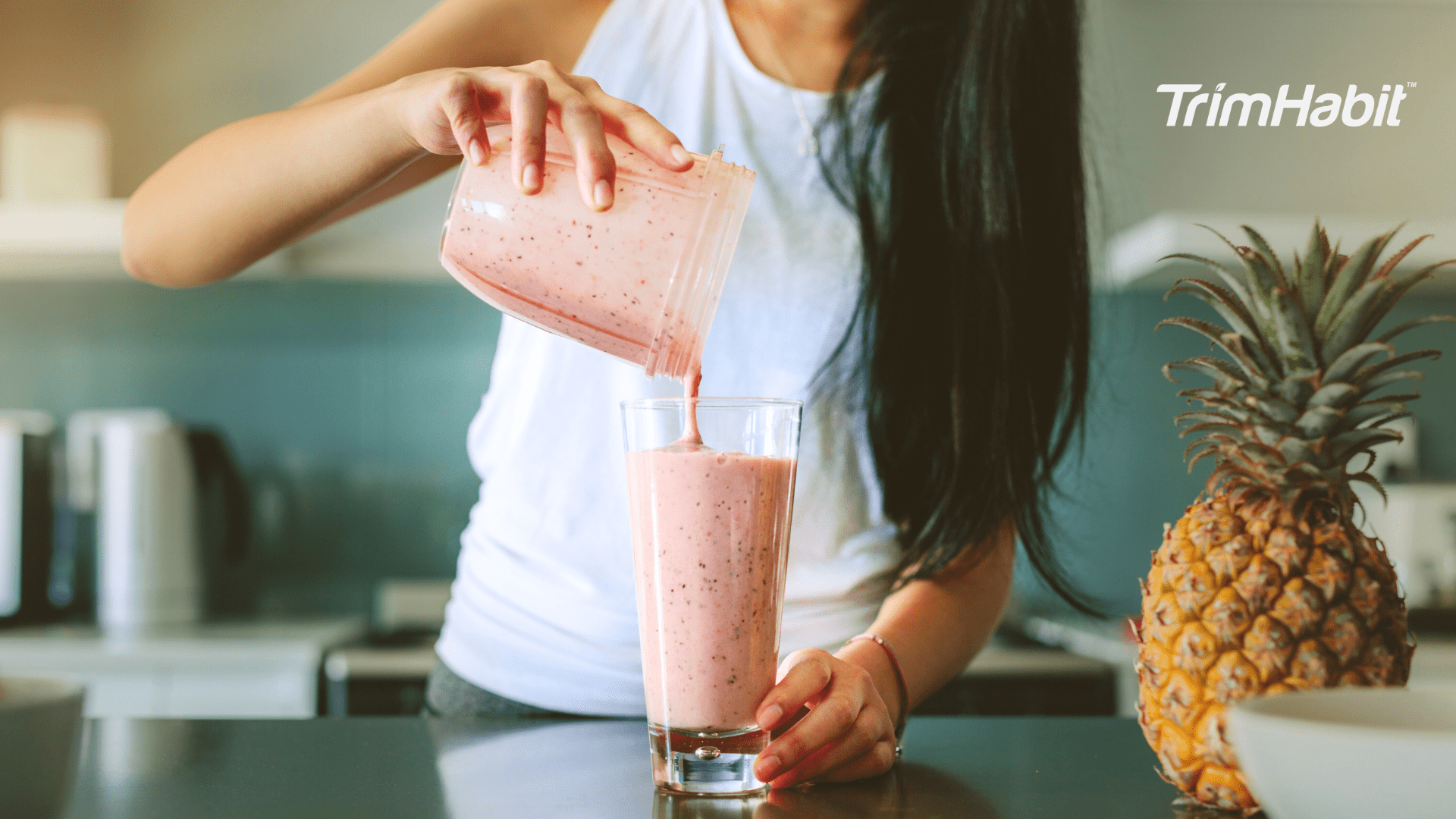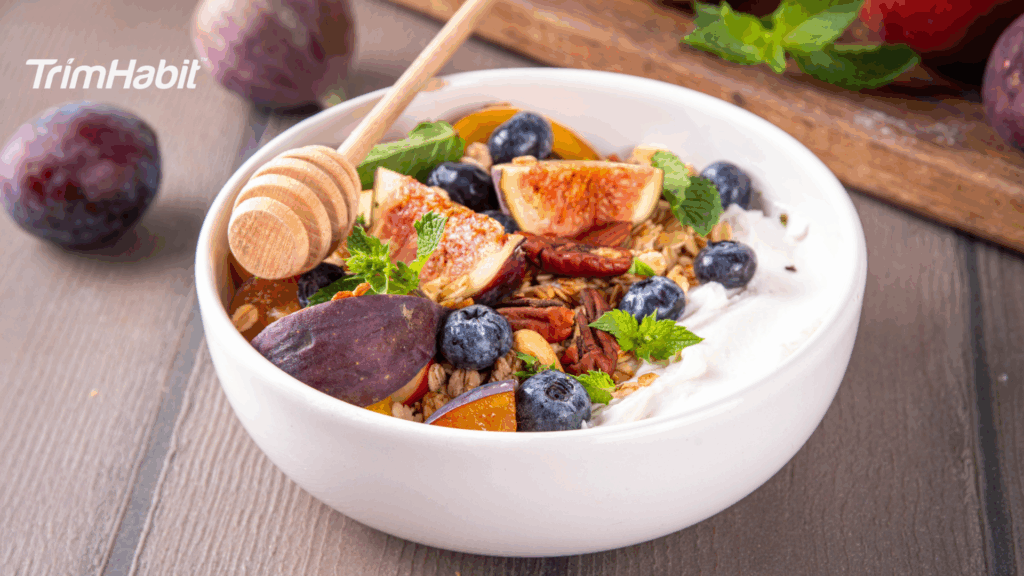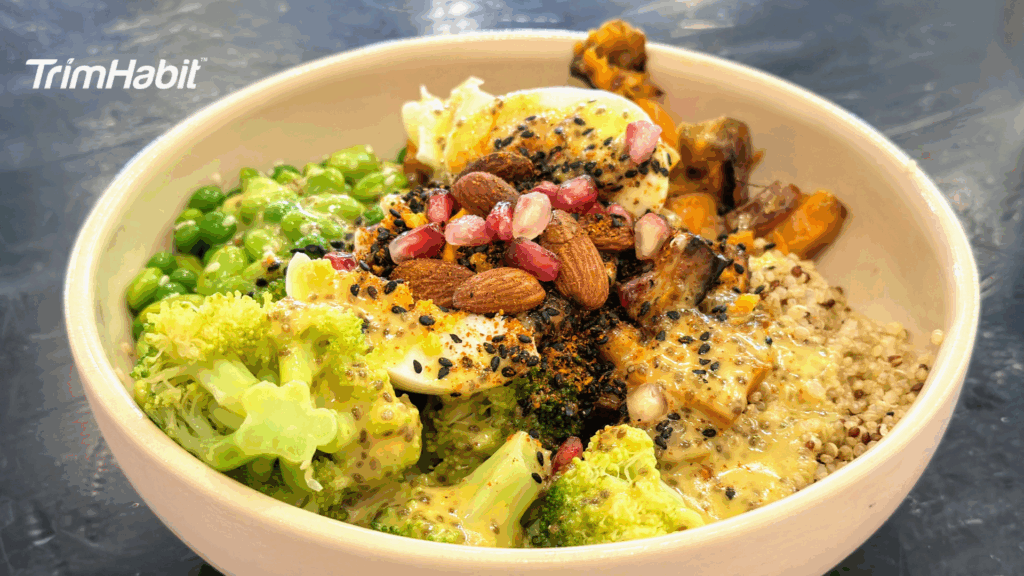Semaglutide, a glucagon-like peptide-1 (GLP-1) receptor medication, has reshaped the conversation around weight management and health. Initially developed for managing type 2 diabetes and now widely used to support weight loss, semaglutide works through multiple physiological effects. It slows the rate at which the stomach empties, supports insulin function, and reduces appetite, all of which can contribute to effective calorie control. These changes often make it easier for individuals to stay consistent with their health goals, but they also create new dietary needs.
As a result, smoothie recipes for semaglutide users can offer a practical and nourishing solution, especially for those with a reduced desire to eat large or frequent meals.
Smoothies can be a helpful addition to a semaglutide meal plan, particularly because they retain fiber and can deliver essential nutrients in a compact, drinkable form. Unlike juices, which often eliminate fiber and spike blood sugar, smoothies preserve the structural integrity of fruits and vegetables. For individuals using semaglutide, this helps support digestion, stabilize energy levels, and maintain satiety between meals. The right combination of ingredients with moderate protein, healthy fats, fiber-rich produce, and naturally sweet components can support consistent progress and help avoid nutritional gaps or blood sugar swings.
The Importance Of Protein And Fiber In Smoothies
When appetite diminishes, ensuring nutritional adequacy becomes a critical concern. This is particularly important when the goal is to lose weight while maintaining muscle mass. Protein powder can serve as a foundational element in many smoothies for this reason. High-quality protein sources help preserve lean body tissue, prevent muscle wasting, and contribute to satiety. Additionally, the thermic effect of protein supports calorie expenditure, making it valuable for weight loss efforts1.
Fiber plays a complementary role. By promoting slower digestion and a more stable rise in blood glucose, fiber-rich smoothies can prevent energy crashes and reduce cravings. Ingredients like chia seeds, rolled oats, mixed greens, kale, spinach, and steamed broccoli are excellent choices. These provide soluble and insoluble fiber that supports gut function and helps control appetite for longer periods. For semaglutide users, leveraging fiber becomes a natural extension of the drug’s appetite-suppressing effects, creating a synergistic relationship between medication and nutrition.
Choosing The Right Liquid Base
The base of your smoothie has a significant impact on both flavor and nutritional quality. Unsweetened almond milk is a standout option due to its low-calorie content and neutral taste. It adds volume and a creamy texture without introducing added sugar or excessive fat. For those seeking variety, coconut water offers hydration and electrolytes, particularly useful during warm weather or post-exercise.
Almond milk, unlike dairy milk, contains fewer carbohydrates, which helps support blood sugar control—a key concern when taking semaglutide. It also makes the smoothie more compatible with a plant-based or lactose-free diet. If additional creaminess is desired, blending in a spoonful of almond butter can enrich the flavor profile while delivering healthy fats that contribute to satiety.
The Role Of Fruits And Vegetables
Fruits bring natural sweetness, vitamins, and antioxidants to smoothies. However, not all fruits are created equal, especially when managing glucose levels. Berries, including strawberries, blueberries, and mixed berries, are excellent choices due to their lower glycemic index and high nutrient content. They pair well with vegetables like kale, spinach, and steamed broccoli, balancing flavor and maximizing health benefits.
For individuals focused on sustainable weight loss, fruits such as green apple, pineapple, and bananas can be used in moderation. A small amount of banana can contribute to the creamy texture of the smoothie, while green apple adds tartness and fiber. When adding vegetables, mixed greens and spinach provide an almost undetectable flavor yet contain vitamins and minerals. These components increase the nutrient density of smoothies and help meet daily vegetable intake targets.
Enhancing Satiety With Healthy Fats
Healthy fats slow digestion and improve nutrient absorption. For semaglutide users with reduced appetite, every calorie counts, and those calories should be as nutritious as possible. Ingredients like avocado, almond butter, hemp seeds, chia seeds, and even a small drizzle of olive oil can provide these healthy fats. These additions help sustain energy, improve satisfaction from meals, and support the absorption of fat-soluble vitamins.
Fat should not be excluded out of fear of calories, especially during a weight loss journey. In fact, moderate fat intake can help individuals feel fuller, longer—particularly when combined with protein and fiber. The combination of protein, fat, and fiber creates a metabolic environment conducive to weight management and supports longer-term dietary adherence.
Flavor Enhancers And Natural Sweeteners
To make smoothies more enjoyable without compromising health, flavor enhancers like unsweetened cocoa powder, cinnamon, nutmeg, and lemon juice can be used. Unsweetened cocoa powder delivers antioxidants and a rich taste, transforming a simple blend into something that resembles a treat. Lemon juice adds brightness and helps balance out the sweetness from fruits like pineapple or bananas.
Natural sweetness from fruits is usually sufficient, but in some cases, a small amount of honey can be added if needed. Even so, it’s best to rely on fruits for flavor to avoid spiking blood sugar levels. The use of spices or acidic components like lemon juice can enhance the perception of sweetness without increasing actual sugar content.
Crafting Smoothies For Different Times Of Day
Smoothies can be consumed at various points throughout the day, depending on personal preferences, hunger cues, and energy needs. For breakfast, a high-protein, high-fiber smoothie with rolled oats, greek yogurt, mixed berries, and almond milk makes for a satisfying meal. This combination delivers slow-digesting carbohydrates, probiotics, and antioxidants while keeping appetite in check.
As a midday meal or snack, a lighter smoothie with steamed broccoli, spinach, avocado, lemon juice, and coconut water can work well. This version emphasizes hydration, electrolytes, and nutrient density. In the evening, a lower-calorie option with chia seeds, unsweetened almond milk, cocoa powder, and strawberries might be a satisfying close to the day without overloading the digestive system.
Example Smoothie Recipes For Semaglutide Users
Each recipe below is designed to align with the unique dietary needs of semaglutide users while delivering exceptional taste, texture, and nutrition.
1. Berry Protein Power Smoothie
This smoothie supports appetite control and helps maintain muscle mass during weight loss. The inclusion of greek yogurt boosts protein and probiotic content.
- 1 scoop protein powder
- 1/2 cup greek yogurt
- 3/4 cup mixed berries
- 1 tbsp chia seeds
- 1 cup unsweetened almond milk
- 1/4 avocado
- Ice cubes to preference
2. Green Detox Smoothie
Ideal for supporting digestion and hydration, this smoothie is nutrient-dense and low in sugar, helping support weight management goals.
- 1/2 cup steamed broccoli
- 1/2 cup spinach
- 1/2 green apple
- 1 tbsp lemon juice
- 1 tbsp hemp seeds
- 1 cup coconut water
- Handful of ice
3. Chocolate Banana Muscle Builder
This is a great post-workout smoothie for semaglutide users looking to maintain muscle mass while on a calorie-restricted diet. It delivers sustained energy and a creamy, chocolatey taste.
- 1 scoop chocolate protein powder
- 1/2 frozen banana
- 1 tbsp unsweetened cocoa powder
- 1 tbsp almond butter
- 1 tbsp rolled oats
- 1 cup almond milk
4. Tropical Energy Boost
Bright and refreshing, this smoothie supports energy needs and provides natural sweetness without relying on added sugar.
- 1/2 cup pineapple
- 1/2 banana
- 1 tbsp chia seeds
- 1 scoop vanilla protein powder
- 1/2 cup greek yogurt
- 1 cup coconut water
5. Nutty Berry Delight
With a creamy texture and a rich flavor profile, this smoothie supports both appetite regulation and nutritional balance.
- 3/4 cup mixed berries
- 1 tbsp almond butter
- 1 tbsp hemp seeds
- 1 cup unsweetened almond milk
- 1 scoop protein powder
Aligning Smoothie Consumption With Medication Timing
Since semaglutide reduces appetite, it’s common for users to skip or delay meals. However, long gaps between eating can sometimes lead to low energy, irritability, or nutrient deficiencies. Including a smoothie in the daily routine offers a practical way to ensure nutrient intake remains consistent. Even if hunger is minimal, sipping a smoothie allows for a slow, steady intake of protein, fiber, vitamins, and minerals.
Spacing meals and snacks throughout the day also aligns with weight management efforts. Rather than eating one or two large meals, spreading nutrient intake can help maintain consistent blood sugar levels and energy. Smoothies can bridge nutritional gaps without requiring large portions, making them an excellent match for semaglutide’s appetite-reducing effects.
Customizing Smoothies Based On Dietary Needs
Those following a plant-based diet can easily tailor smoothie ingredients to align with their lifestyle. Plant-based protein powders, such as those made from pea, rice, or hemp, can replace dairy-based options. Non-dairy yogurts made from almond or coconut can offer probiotic benefits without animal products. Almonds and other plant sources of fat can ensure that meals remain satisfying and nutrient-rich.
For individuals sensitive to high carbohydrate intake, such as those with insulin resistance or type 2 diabetes, the focus should remain on low-glycemic fruits, leafy greens, healthy fats, and moderate protein. Avoiding high-sugar fruits and skipping fruit juices can help keep the glycemic load in check.
Those with increased protein needs, such as older adults or those engaging in resistance training, can increase the proportion of greek yogurt or protein powder in their smoothies. A higher protein intake supports muscle preservation, which is particularly important during a weight loss phase that involves calorie reduction.
Making Smoothies A Part Of Long-Term Lifestyle Changes
Using smoothies as a consistent meal or snack option supports the idea of sustainable weight loss. Unlike fad diets that involve severe restrictions or temporary food elimination, smoothies can become a flexible part of daily life. They can be made in advance, customized with a variety of ingredients, and adjusted to suit changing dietary needs or preferences.
For semaglutide users, maintaining variety in smoothies helps prevent flavor fatigue and promotes continued adherence to a healthy diet. Alternating between berry-focused, green vegetable-based, or nut-enhanced blends keeps meals interesting and ensures that a broad spectrum of nutrients is consumed.
More importantly, smoothies allow for fine-tuning. Users can observe how different ingredients affect satiety, digestion, energy, and appetite. Over time, this helps create a diet that is not only nutritious but personalized and sustainable. Making smoothies a part of a semaglutide meal plan enables users to take an active role in shaping their health outcomes.









